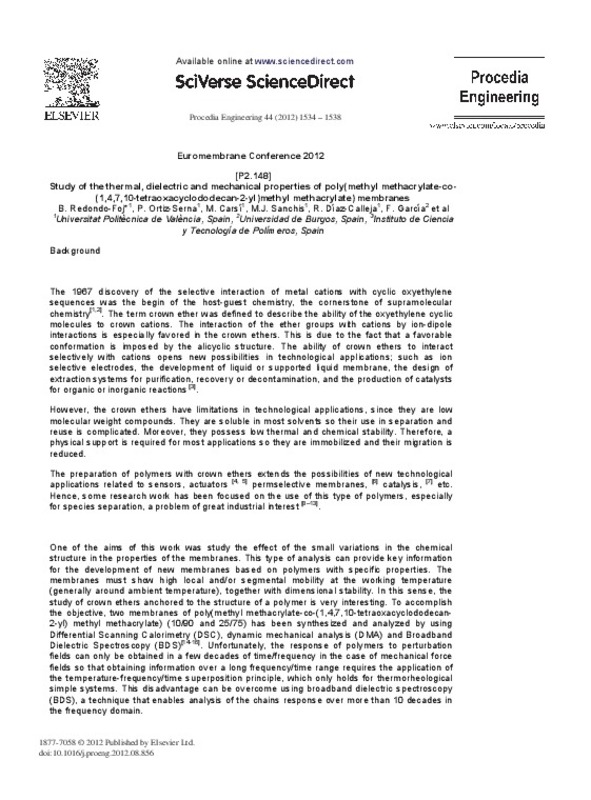JavaScript is disabled for your browser. Some features of this site may not work without it.
Buscar en RiuNet
Listar
Mi cuenta
Estadísticas
Ayuda RiuNet
Admin. UPV
Study of the Thermal, Dielectric and Mechanical Properties of Poly(Methyl Methacrylate-co-(1,4,7,10-Tetraoxacyclododecan-2-yl)Methyl Methacrylate) Membranes
Mostrar el registro completo del ítem
Redondo Foj, MB.; Ortiz Serna, MP.; Carsí Rosique, M.; Sanchis Sánchez, MJ.; Díaz Calleja, R.; García, F. (2012). Study of the Thermal, Dielectric and Mechanical Properties of Poly(Methyl Methacrylate-co-(1,4,7,10-Tetraoxacyclododecan-2-yl)Methyl Methacrylate) Membranes. Procedia Engineering. 44:1534-1538. https://doi.org/10.1016/j.proeng.2012.08.856
Por favor, use este identificador para citar o enlazar este ítem: http://hdl.handle.net/10251/67118
Ficheros en el ítem
Metadatos del ítem
| Título: | Study of the Thermal, Dielectric and Mechanical Properties of Poly(Methyl Methacrylate-co-(1,4,7,10-Tetraoxacyclododecan-2-yl)Methyl Methacrylate) Membranes | |
| Autor: | Redondo Foj, María Belén Ortiz Serna, Mª Pilar Díaz Calleja, Ricardo García, Félix | |
| Entidad UPV: |
|
|
| Fecha difusión: |
|
|
| Resumen: |
[EN] The synthesis and characterization of new polymeric materials containing crown ethers in their structure is very interesting due to their possibilities of use in many technological applications: metal ion catalysts, ...[+]
|
|
| Palabras clave: |
|
|
| Derechos de uso: | Reconocimiento - No comercial - Sin obra derivada (by-nc-nd) | |
| Fuente: |
|
|
| DOI: |
|
|
| Editorial: |
|
|
| Versión del editor: | http://dx.doi.org/10.1016/j.proeng.2012.08.856 | |
| Código del Proyecto: |
|
|
| Agradecimientos: |
|
|
| Tipo: |
|









